Why did I break my hip?
If you’re over 50 and broke (fractured) your hip, it’s most likely because your bones aren’t strong. This could happen if you have “thinning bones”, also called
osteoporsis.
Are there different types of hip breaks?
The type of hip surgery you need depends on the type of hip fracture you have. The hip can break in 3 ways:
- across the neck of the bone (called a transcervical or subcapital hip fracture)
- below the neck of the bone (called an intertrochanteric hip fracture)
- across the shaft of the bone (called a subtrochanteric hip fracture)
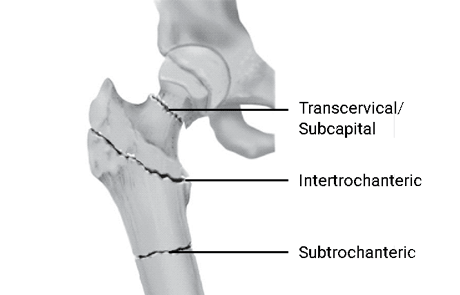
Areas where the hip can break
Credit: AO Foundation
How is a broken hip fixed?
The type of hip surgery depends on the type of hip fracture. Your surgeon will look at your hip x-rays to help them decide what type of surgery you need.
The pictures below show some of the ways to fix a broken hip.
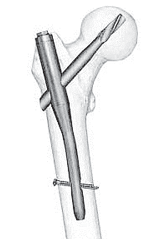
Intramedullary (Gamma) nail
|
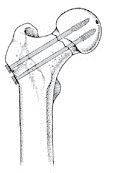
Cannulated screws
|
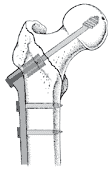
Sliding/ Dynamic hip screws
|
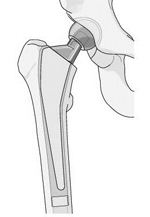
Partial hip replacement
(Hemiarthroplasty)
|

Total hip replacement
(Total Hip Arthroplasty)
(Notice the extra piece)
|
Ways to fix a broken hip
Credit: AO Foundation
Hip implants are used to fix a broken hip. They’re made of metal, plastic, or ceramic. The implant your surgeon chooses depends on things like your age and how strong your bone is. Your surgeon will talk to you about the type of surgery you need. If you have questions, talk to your surgeon or nurse. If you can, bring someone with you to your appointment to help you remember the information. If you are alone when the surgeon talks with you and you want someone else to hear the information, ask your surgeon to call a friend, family member, or support person.
Download: When you're having surgery for a fractured hip
A summary of the hip fracture guide is translated into 7 languages.
